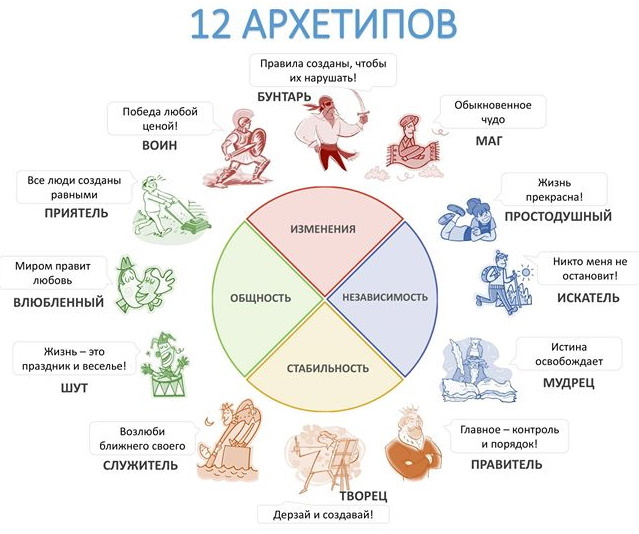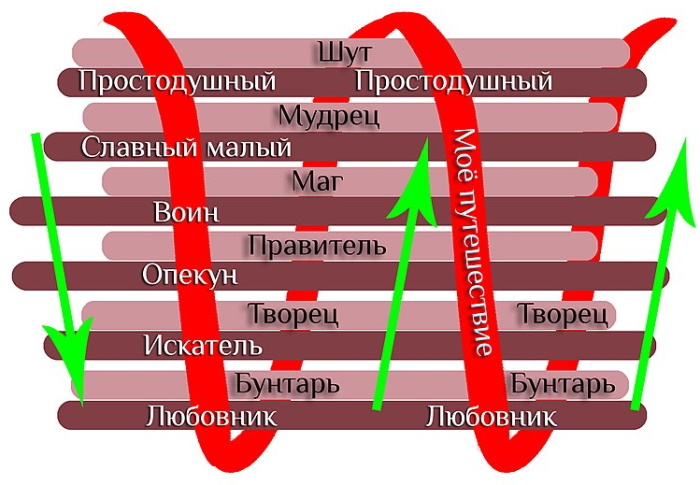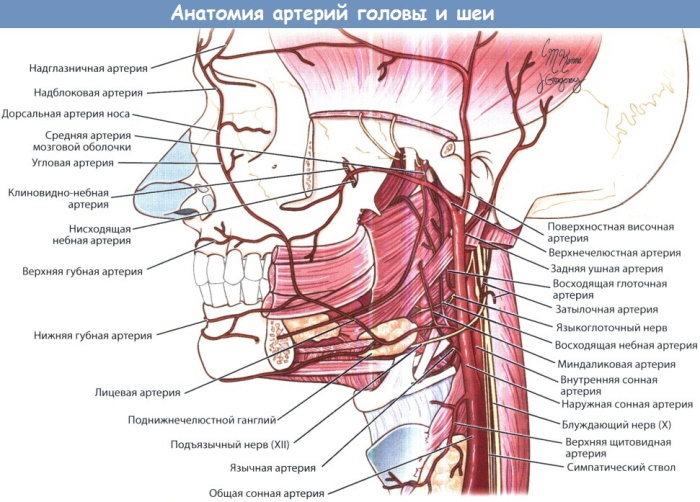Content
- What is it, definition
- History
- Libido personifications
- Primal images
- Initial forms
- Development of the theme
- Archetype and symbol
- Classical school
- Unus Mundus
- In the collective unconscious
- Archetypes and images
- Archetype classification
- Unorthodox concepts
- Hero's Journey
- Criticism
- Images are not inherited
- Influence
- Archetype videos
In psychology, the concept is often used "Archetype". He was introduced to science by Carl Gustav Jung, a Swiss psychologist and educator. For some time he was a follower and supporter of the world famous Sigmund Freud. But then K. Jung moved away from the study of psychoanalysis and looked for new approaches to understanding the psyche. He is the founder of analytical psychology. Under his authorship, a book has been published on the topic "The structure of the psyche and archetypes." Today many psychologists use archetypes in their work.
What is it, definition
Jung archetypes can be called factors that influence a person's response to certain events, situations or objects. A sustainable model of human behavior is being implemented. Such reactions are innate or collectively unconscious.
K. Jung argued that archetypes make thoughts and feelings appear in relation to an object.
For example, you can cite the relationship between a child and a mother. The child perceives his mother as a set of certain characteristics that have developed historically. These include parenting, fertility, and dependence.
K. Jung also hypothesized that archetypes arise in a dream. But they can also be found in painting, literature, religion in the form of various symbols. Jung noted that similar content can be found in different cultures. This proves that archetypes are the same for all cultures.
History
Carl Jung and Sigmund Freud were connected not only by professional relations, but also by friendship. Jung was a follower of Freud until 1912. This year, a work by a young scientist on the psychology of the unconscious came out. The work served as a split between Freud and Jung, since the theory of the second was incomparable with the teachings of the first.
The very word "Archetype" already existed even before the appearance of Carl Jung's theories. It meant the idea of the origin of the world. Its creator was God. In the future, the word had the meaning of "original"
Libido personifications
Carl Gustav Jung began to use the term "archetype" in his writings, first using it in 1912.
Freud and Jung explain the concept of libido in different ways. The second agreed with the idea of libido according to Freud, therefore his work is described from the point of view of Freudianism. But the term is interpreted more broadly. The main function of libido is not only sexual. He argued that sexual need is a part of psychic energy, which manifests itself only when it is relevant and priority for the individual.
TO. Jung put forward the theory that the cause of mental problems may not only be an unmet sexual need, as Freud argued. Jung believed that the cause could be any other need that is a priority for the individual. Also, this need goes beyond animal instincts. Jung put forward the theory that the basic energy of a person can manifest itself not only in the framework of unconscious impulses, but also in conscious activity.
The scientific work describes the personification of libido in the form of deities. Already in 1916, Jung was published in a scientific journal. In the new scientific work, he already openly disagrees with the theories of Freud. In the same work, K. Jung introduces the concept of the collective unconscious into psychology. Various myths and legends of different peoples act as proof. They all have things in common.
There is a connection of the collective unconscious with the individual personality. In the same article, Jung first uses the concept of "persona", which will later become one of the archetypes. The persona acts as a mask for the collective psyche. It is used in the interaction of a person with society.
Also 2 new concepts appear - anima and animus. Anima is the masculine part of the personality, which shows the feminine side of his being. Animus is a similar concept for the female psyche.
Primal images
After 1917, Jung tried to realize the idea of combining individuality and the unconscious. He writes a new work, where he refers to the work of scientists in various directions. Among them are Alfred Adler (founder of individual psychology), Jacob Burckhardt (culturologist, introduced the concept of "original" image).
Combining various teachings, the formation of the concept of "original" images according to Jung takes place. Such images cause a powerful boost of human energy.
Initial forms
In 1919, Jung first uses the concept of "archetype". It is necessary to demonstrate the points of contact of theories of the collective unconscious with previous philosophical teachings. Jung concludes that the collective unconscious consists of 2 parts - instincts and archetypes.
Development of the theme
By 1928, K. Jung, which expands the concept of archetypes.

An archetype in psychology is an inherited predisposition to the emergence of a certain idea. The personality has been balancing all its life between 2 opposites of the collective psyche. Here is the desire to follow society through social roles. On the other hand, there is the unconscious collective with personal stimuli.
The concept of self is mentioned for the first time. This is a phenomenon when there is a synthesis of the unconscious and the conscious. Most often this happens in a dream. A person receives images, symbols, which are sent to him by the unconscious part of the psyche.
Now the scientist has formulated the process of connecting two parts of the psyche. First, there is a separation from the person (victory of the dragon by the hero), then liberation from the anima or animus. The conclusion of the process is the renunciation of the superhuman illusions of the mano-personality archetype.
Archetype and symbol
After 1947 K. Jung tries to systematize his theories. He believed that the human mind maintains a balance between the two dominants of the unconscious collective.
On the one hand, instincts come into play. They represent everything physical.
An archetype in psychology is everything that relates to the psyche. This part protrudes from the other side. The 2 dominants of the unconscious collective work together, creating energy flows for mental processes.
Then Carl Jung republishes his own article, expanding the study of the synchronous work of instincts and archetypes. The work is called "On Psychic Energy". In the article, Jung explains how energy moves between instincts and archetypes. He claims that in a state of rest, human energy is spent on ensuring life, that is, physical needs. But every person has an overabundance of such energy. And it needs to be ejected. Thus, a person spends his energy on the creation of culture. Its release occurs in the form of various symbols. They are formed from archetypes.
Every symbol that emerges from the unconscious must be attractive in order to overpower the instincts. Now Carl Jung is less critical of symbols and individuation.
Recent works by the psychiatrist have been aimed at explaining individual archetypes.
Classical school
Carl Gustav Jung's writings served as the basis for further research by other psychiatrists.
Unus Mundus
If we follow the theories of K. Jung, then a system of approach to the highest level of being is created. The psychiatrist believed that the whole world is divided into 2 dominants, which are opposite. But they are synchronized, flowing into each other. This connection becomes a condition for the emergence of a higher level of being.
Unus Mundus is divided into 2 dominants: matter and psyche. The psyche, in turn, is also divided into 2 opposite, but working together, dominants. This is the individual psyche and the collective unconscious. According to Jung, the collective unconscious is divided into instincts and archetypes.
In the collective unconscious
The classical school of psychology classifies instincts as physiological needs, although their existence has not been scientifically proven. Instincts are perceived by the senses.
An archetype in psychology is the exact opposite of instincts. Therefore, they work in the reverse order. That is, through emotions or images.
Evidence may be that some scientific discoveries were made by scientists after seeing dreams. Later it was proved that all the discoveries made in the field of physics, one way or another, already existed in images created by ancient philosophers.
Archetypes and images
Archetype and image are 2 opposite dominants, as described above. They flow into each other, synchronizing. Therefore, archetypes were necessary for K. Jung for answering critics' questions that the image is not hereditary. An archetype can draw images from the conscious that will evoke emotions. When fear, anxiety or other emotion appears, a certain pattern of behavior is formed. This is how the entire psychological complex works, according to Jung's followers.
Archetype classification
K. Jung did not believe that archetypes needed classification. Since they appear in the form of images from the unconscious, they can be cognized only through analysis. It is necessary to analyze the emerging contents that appear due to archetypes. Therefore, the classification can only be created hypothetically. In different works of Jung and his followers, there are different archetypes (infant, mother, rebirth), but there is no strict classification and division of them.
The only way of separation, which was used by K. Jung, was the selection of 2 dominants opposite to each other. At the highest level of being, a pair is highlighted: spiritual and material. There is a male archetypal image of the Heavenly Father and the opposite female image - the Great Mother.
Further attempts to classify archetypes went the following way. In 1988 the book "Psyche and Matter" was published. In it, Fong Franz defends the theory that archetypes are classified, and not randomly generated. She called this process "the game of archetypes." She confirmed her words with the Zodiac. She believed that the signs of the zodiac are projections of human fantasies.
Later, Leopold Stein voiced the theory that each archetype has a unique function. This runs counter to Jung's archetypes, which could carry several functions at once. According to Stein's theory, classification is possible.
Unorthodox concepts
A new branch in the study of Jung's concepts was a course of lectures by a follower of the analytical school, James Hillman. He was the research director of the K. Cabin boy. The book "Revision of Psychology" was published on the basis of the lectures. It opened the way for a new analytical school of psychology.
Representatives of the classical school interpreted archetypes rather freely and arbitrarily. Hillman disagreed with this. The scientist especially criticized the works of the representative of the old school Erich Neumann (student and follower of Jung's theories), who reduced all feminine contents to a single archetype of the Mother.
Also, Hillman did not believe that the self was the core that united the rest of the archetypes.
The archetype in psychology is an outdated term, according to Hillman. He proposed to replace the concept of archetype, since it was too vague and arbitrary, replacing it with archetypal images. In this case, the concept of 2 opposite dominants collapsed.
Now it was necessary to explain the appearance of images in a different way. Hillman used the idea of a French Islamic scholar, referring to the concept of three worlds. The same system was found by Hillman in the philosopher Marsilio Ficino. He identified three components: body, mind and imagination.
Hero's Journey
Based on the hero's journey, a questionnaire has been created that will reveal the dominant personality archetype. The modified version of the journey was created by one of the followers of a movement that combined esotericism, occultism, syncretism, Carol Pearson.
The name of the direction itself: "New Era". To create the questionnaire, Carol Pearson took the work of Neumann, who was criticized by James Hillman, and Joseph Campbell (an American mythologist). And connected with the new direction of the analytical school of psychology from James Hillman.
The first theories that the myths and legends of different cultures have one idea were expressed by the anthropologist A. Bastian. Already in 1909, a follower of Freud found 12 signs that unite the legends of different peoples. In 1912 K. Jung tried to extract ideas from myths into real life. Thus, the archetype of the hero was formed. A book was published in 1936, the authorship of which was submitted to the anthropologist Raglan. She is called "Hero". In it, the scientist has already identified 22 recurring features of the hero.
Carol Pearson first identified 6 archetypes. She also noted that a person does not always live all archetypes sequentially one after another, as she described in her scheme, which can be found in the book "The Inner Hero". The book was reprinted after 1990. There were already 12 archetypes in it. They became the basis for a questionnaire that Carol Pearson created in collaboration with Hugh Marr.
Criticism
Like all areas of psychology and science, archetypes have been criticized.
Images are not inherited
Adolf Portmann put forward the theory that the higher animals, which include mammals, some species of birds, reptiles, have instincts similar to human archetypes. In the future, attempts to combine the teachings of archetypes with ethology were made by other supporters of Jungian psychology.
By 2000, attempts were being made to link archetypes to cognitive psychology. Jean Knox in her research focused on the theory of attachment, the author of which is the English psychoanalyst John Bowlby.
She made the assumption that the mental model of a person is the result of a fusion of archetypes (they are inherited) and personal experience. In this model of development, the archetype is the basis for the development of the personality. But the personal experience of influence with important figures to which a person is attached is extremely important. This includes relationships with parents.
Influence
Archetypes are still being studied and used in various fields of science and human life. Archetypal pedagogy appeared. This is the direction that helps the teacher to grow in the spiritual and psychological sphere.
In 2001, a book was released that described archetypes in brand marketing. It is called "Hero and Rebel". One of the authors was Carol Pearson (creator of the archetype survey). The main idea of the book was that the winner is the brand that uses established images in its advertising that bring them closer to archetypes.
A psychological test will help determine the archetype. It contains simple questions that need to be answered with the utmost honesty. This will help determine the potential, capabilities, strengths and weaknesses of the individual.
Archetype videos
The concept of an archetype in the collective unconscious:



